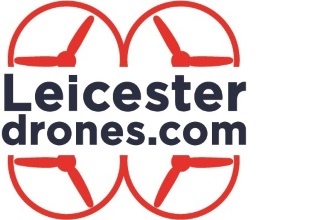Find more Information about the DJI Mini 4 Pro here
Find more Information about the DJI Mini 3 Pro here
DJI Mini 4 Pro | DJI Mini 3 Pro |
Under 249 g | Under 249 g |
1/1.3-inch CMOS Wide-Angle Camera True Vertical Shooting | 1/1.3-inch CMOS Wide-Angle Camera True Vertical Shooting |
4K/60fps HDR Slow Motion: 4K/100fps Night Shots Video | 4K/60fps, 4K/30fps HDR Slow Motion: 1080p/120fps - |
10-bit D-Log M, HLG | D-Cinelike |
Omnidirectional Obstacle Sensing, APAS 5.0 Advanced RTH, Waypoint Flight, Cruise Control | Forward/Backward/Downward Obstacle Sensing, APAS 4.0 Smart RTH |
DJI O4: Up to 10 km 1080p/60fps Live Feed
| DJI O3: Up to 8 km 1080p/30fps Live Feed
|
In the ever-evolving world of drones, DJI has been a pioneering force, consistently pushing boundaries and setting new standards for consumer-grade quadcopters. With each iteration, they've managed to surprise enthusiasts and professionals alike. In this article, we'll take a closer look at the fascinating journey of the DJI Mini series, focusing on the DJI Mini 4 Pro and its predecessor, the DJI Mini 3 Pro. We'll delve into the remarkable differences that set these two drones apart and explore how DJI continues to redefine the possibilities of compact aerial photography.
DJI Mini 4 Pro: Breaking Boundaries
The DJI Mini 4 Pro represents a significant leap forward in the world of ultra-compact drones. DJI engineers have meticulously crafted this pint-sized marvel to cater to the needs of aerial photographers and content creators, all the while adhering to the crucial sub-250-gram weight limit. Let's break down the key differentiators that make the Mini 4 Pro a standout choice.
1. Camera Capabilities:
At the heart of any great drone is its camera, and DJI knows this better than anyone. The Mini 4 Pro boasts a 1/1.3-inch CMOS wide-angle camera, a notable upgrade from its predecessor. This larger sensor equates to enhanced image quality and improved low-light performance, allowing you to capture stunning visuals in various conditions.
What truly sets the Mini 4 Pro apart is its ability to shoot in true vertical mode, offering a unique perspective for your shots. Furthermore, the Mini 4 Pro supports 4K video recording at a stunning 60 frames per second (fps) in high dynamic range (HDR). This combination of resolution and frame rate results in breathtakingly sharp and lifelike footage that's sure to impress.
For those who crave the magic of slow-motion cinematography, the Mini 4 Pro doesn't disappoint. It can record slow-motion video at 4K/100fps, giving your videos a cinematic quality that was once reserved for larger, more expensive drones.
2. Advanced Features:
In terms of obstacle avoidance and flight capabilities, the Mini 4 Pro is another league above. It boasts Omnidirectional Obstacle Sensing with APAS 5.0, which means it can intelligently navigate around obstacles from all directions, ensuring safer flights and more creative shooting angles. With Advanced RTH (Return to Home), Waypoint Flight, and Cruise Control, you have an array of options to tailor your flight experience precisely to your needs.
Additionally, the Mini 4 Pro's DJI O4 transmission system offers a range of up to 10 kilometres, providing an unprecedented level of connectivity and control. And for those who prefer a live view, the drone delivers a crisp 1080p/60fps live feed.
DJI Mini 3 Pro: A Solid Foundation
Before the Mini 4 Pro made its grand entrance, the DJI Mini 3 Pro had already carved a niche for itself. While it may lack some of the advanced features found in its successor, it's essential to appreciate the solid foundation it laid for the Mini series.
1. Camera Capabilities:
The Mini 3 Pro boasts a 1/1.3-inch CMOS wide-angle camera, which was a significant leap in sensor size compared to its predecessors. It supports 4K video recording at 60fps and 30fps in HDR, delivering high-quality footage for its time. Slow-motion enthusiasts could enjoy 1080p video at 120fps, allowing for creative and dynamic shots.
2. Advanced Features:
In terms of obstacle avoidance, the Mini 3 Pro features Forward, Backward, and Downward Obstacle Sensing with APAS 4.0. This system enabled the drone to navigate around obstacles in these directions, enhancing its safety during flights. It also featured a Smart Return to Home (RTH) function, ensuring the drone's safe return to its pilot. With DJI O3 transmission, it had a commendable range of up to 8 kilometres, providing a stable connection for confident flying. The live view is delivered at 1080p/30fps, offering a clear perspective of your flight.
As we delve deeper into the differences between these two impressive drones, it becomes evident that DJI has raised the bar once again with the Mini 4 Pro. Its enhanced camera capabilities, advanced obstacle avoidance, and extended range make it a game-changer for aerial photography and videography enthusiasts.
*Article written by Chat GPT



